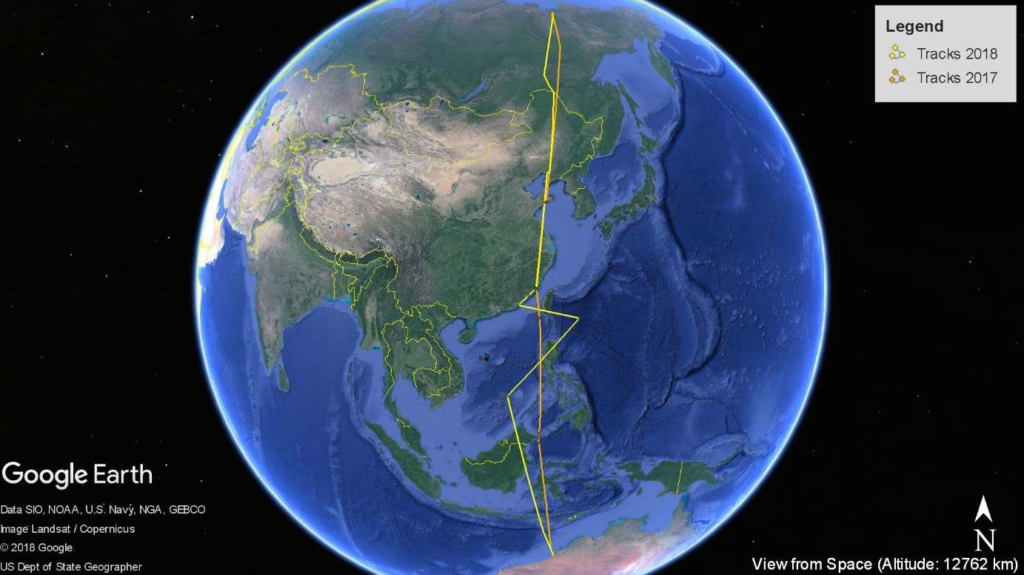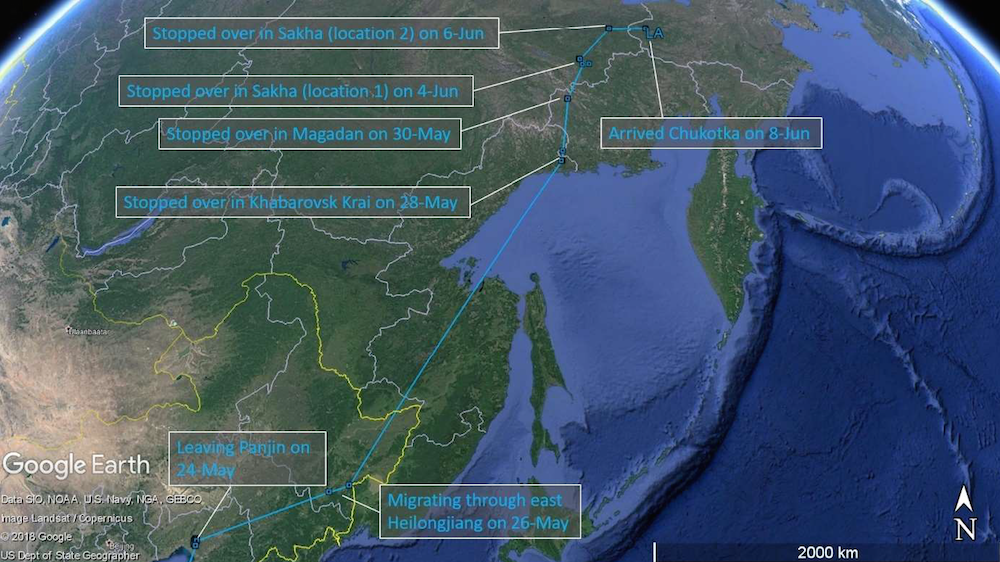Whimbrels in Russia
After all the perfect demonstration of “site fidelity” by KU throughout its northward migration this year, it might not be a surprise that KU has chosen the same breeding site as last season. KU reached its breeding ground on 1-Jun-18, the date of arrival is a week earlier than season 2017.

After leaving Liaoning Province on 19-May, KU shortly stopped over in Heilongjiang Province for 2 days before crossing the China-Russia border on 25-May. From 4pm to 10pm on 25-May, it was flying with speed of nearly 60km/h.
In 2017, KU spent more than 10 days around the mountain range area before deciding its breeding site. This year, it heads straight to its breeding site after resting for a day at the southern side of the mountain range.
It is hoped that KU will soon settle to breed.
Third-year Whimbrel LA, which heads to breeding ground for the first time in its life, is still trying to decide its breeding site. After leaving Panjin in Liaoning Province on 24-May-18, it flew for 4 days for 2,790km to reach northern Khabarovsk Krai in Russia. Since then it migrated slowly by stopping at 4 sites before reaching Chukotka this morning. Hopefully LA will soon decide where it is going to breed.

Unfortunately, signal from our third Whimbrel JX has ceased since 20-May in Heilongjiang. It could not be determined whether this is due to breakdown of the tag or the death of the bird.
It is known that hunting in Russia during spring passage has resulted in the deaths of a number of migratory shorebird each year. It was sad to know that satellite tagged Whimbrel SJ from Broome this year was found dead from shooting. Satellite tags were deployed on SJ and 4 other Whimbrels at Broome in February this year under a collaboration project between Fudan University and AWSG. The body of SJ was found on 30-May after signal transmission ceased on 27-May in Sakha Republic, Russia. This story might only be the tip of an iceberg of the threats from hunting that migratory shorebird is facing. It is hope that the situation would eventually improve through international cooperation, education and advocacy work.
